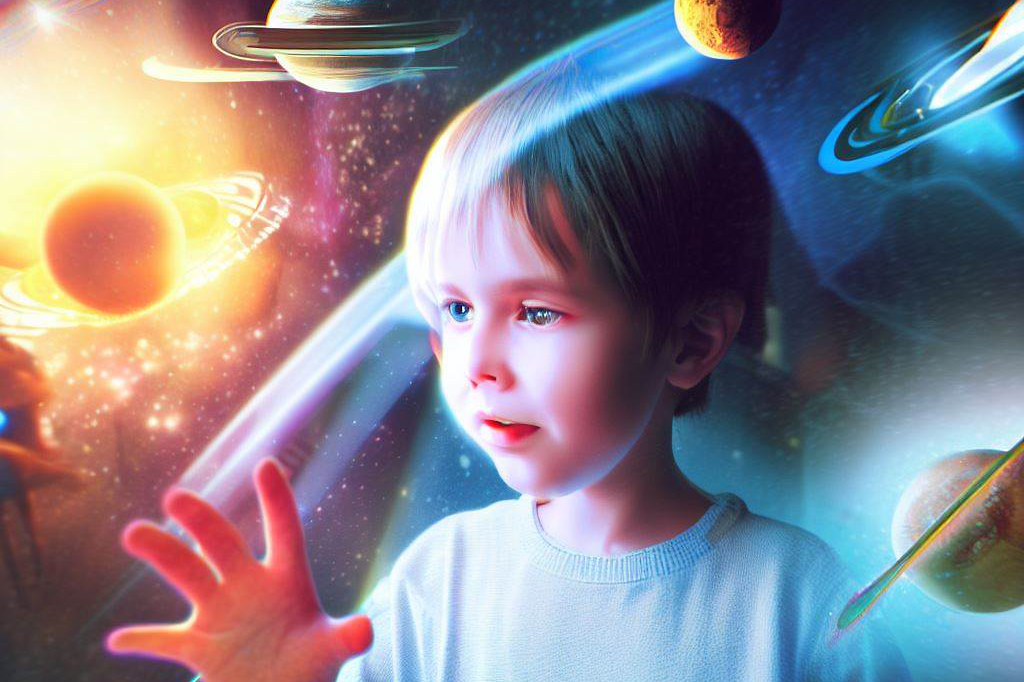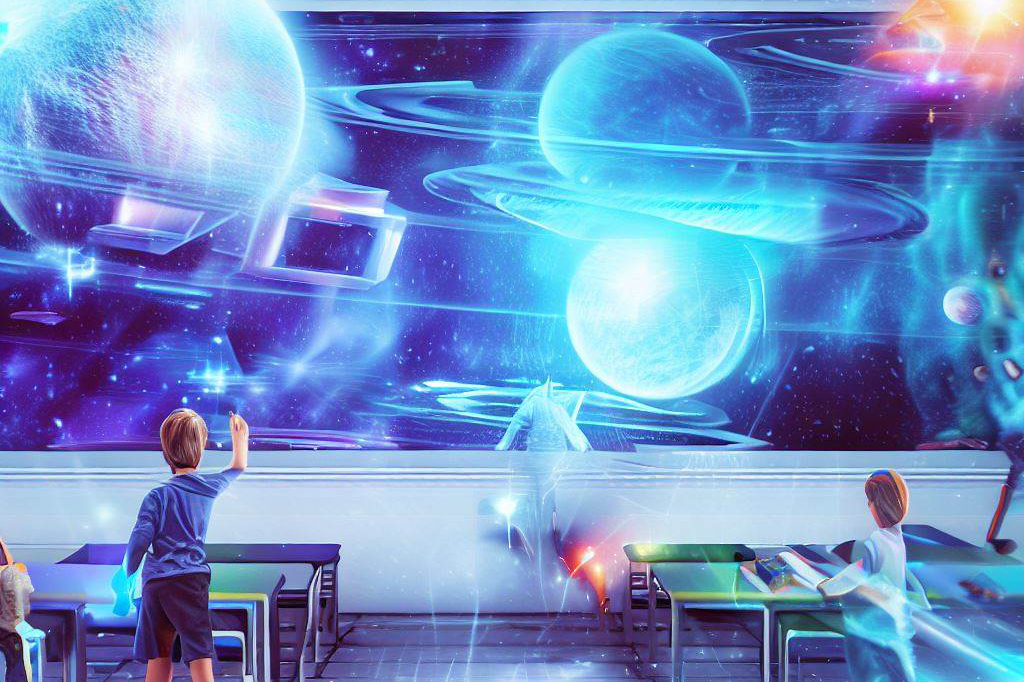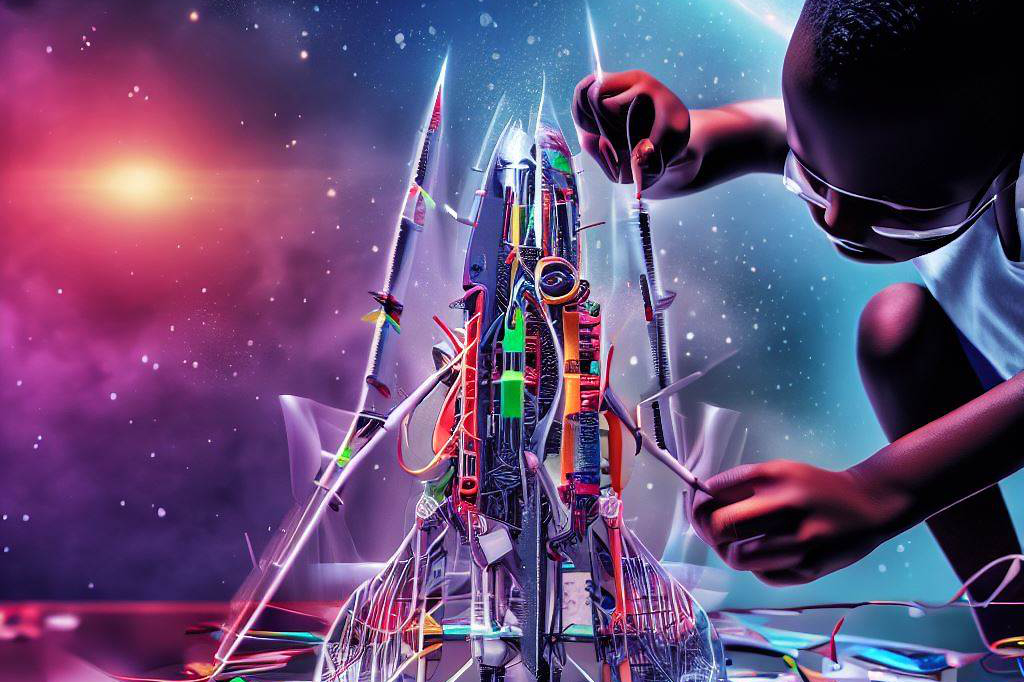A Universe of Exploration
Have you ever looked up at the night sky and wondered what lies beyond our planet? The twinkling stars, distant planets, and mysterious black holes that make up our universe have captured the imaginations of humans for centuries.
The study of space, also known as astronomy, has fueled countless scientific discoveries and inspired generations to pursue careers in science, technology, engineering, and math (STEM). However, to fully understand and appreciate the wonders of space requires a certain level of knowledge and understanding – this is where “space literacy” comes into play.
Exploring Space Literacy
Space literacy is defined as having a basic understanding of astronomy concepts such as stars, planets, galaxies, comets, and other celestial objects. It also includes the ability to interpret astronomical data such as charts or graphs.
Having this knowledge allows individuals to better comprehend news about space exploration missions or astronomical events like meteor showers or eclipses. Beyond that though – having space literacy also expands one’s perspective about the world; it helps us understand how small we really are in comparison to the vastness of our universe.
The Importance of Early Childhood Education

While many people develop an interest in space later in life through media coverage or popular science fiction books/movies (think Star Wars), studies have shown that early exposure significantly increases interest in STEM fields, including astronomy. Encouraging children’s natural curiosity about space can inspire them to explore these topics more deeply throughout their schooling years. Early childhood education can be especially impactful since it lays a foundation for students’ cognitive development that will serve them throughout their schooling years.
In short: Space literacy is essential for anyone wanting to have a basic understanding of what’s happening in our universe. Moreover, an early start is ideal for promoting an understanding and appreciation for STEM fields like astronomy among children, which could spark a lifetime of discovery and exploration.
The Benefits of Space Literacy in Early Childhood Education

Improved Cognitive Development and Critical Thinking Skills
Space literacy in early childhood education has been shown to have a positive impact on cognitive development and critical thinking skills. By learning about space, children are able to develop their analytical skills as they learn how to gather information, make observations, and draw logical conclusions.
This process helps them develop their critical thinking skills, which will be invaluable as they grow up. Furthermore, space literacy encourages children to think outside the box and consider alternative perspectives.
They learn how to analyze complex data and connect seemingly unrelated concepts. These skills are not only useful in science but also in daily life.
Enhanced Imagination and Creativity
Children who are exposed to space literacy at an early age often exhibit greater imagination and creativity than those who are not. Studying the vast universe ignites a sense of wonder in young minds that inspires them to create stories, artwork, or even design their own inventions.
Moreover, when children explore the mysteries of space through play or art projects, they stretch their imagination beyond what they can see with their own eyes. This encourages them to think creatively and come up with new ideas.
Increased Interest in Science, Technology, Engineering, and Math (STEM) Fields
Space literacy can also foster an interest in STEM fields at an early age.
When children learn about space exploration missions or see images of planets or galaxies online or on TV shows like NOVA or Cosmos: A Spacetime Odyssey they become curious about science concepts such as gravity or light speed that explain space phenomena. As they continue learning about these topics throughout primary school years until senior high school students will become increasingly interested in STEM fields because it is relevant for understanding many aspects of the universe around us.
With this interest comes a desire for deeper knowledge, which can lead them to pursue careers in science, technology, or engineering later in life. Space literacy in early childhood education is beneficial for cognitive development, creativity, and interest in STEM fields.
It provides children with a strong foundation for future learning that encourages them to become lifelong learners who are curious about the world around them. Space is one of the most fascinating topics we can teach, and kids love it!
Strategies for Promoting Space Literacy in Early Childhood Education

Incorporating space-themed activities into lesson plans
Making the lessons fun and engaging is vital for young children to develop an interest in space. Educators can incorporate space-themed activities into their lesson plans, such as making paper rockets or creating a model of the solar system with household objects.
These fun projects allow students to learn while also having fun. Teachers should encourage children to explore their creativity and think critically about the concepts they are learning.
Encouraging children to ask questions about space
Teachers need to foster a learning environment that encourages children to ask questions about space. This can be done by promoting curiosity and encouraging discussion during class time.
It’s also essential that teachers provide age-appropriate answers to help students develop a solid understanding of the topic. When educators show genuine interest in what their students are saying, it fosters positive relationships between teacher and student.
Reading books about space and astronomy to children
Reading books on astronomy is an excellent way for educators to introduce young children to the wonders of space exploration. Not only does this help develop their language skills, but it also helps them associate reading with something they enjoy.
There are many great books available for young readers on space topics that teachers could incorporate into their curriculum, such as “The Magic School Bus Lost in Space” or “There’s No Place Like Space: All About Our Solar System.” By reading these books aloud, teachers can create a sense of excitement around exploration.
Field trips to planetariums or observatories
Field trips provide an opportunity for students to observe astronomy firsthand while getting exposed to new experiences outside of school premises! Taking young learners on visits gives them a chance not only for practical hands-on experience but also allows them access more advanced equipment and resources. Planetariums or observatories are great places for educators to take learners, as they provide an immersive experience that can help children visualize what they are learning.
During these field trips, students can learn about the history of space exploration, see stars and planets up close, participate in simulations of space travel, and much more. These strategies will help teachers promote space literacy in early childhood education.
By incorporating these techniques into their lesson plans, teachers can make the topic of space exciting and fun for young learners while simultaneously developing critical thinking skills and language development abilities. It is essential to keep young learners interested in scientific discovery to ensure the next generation has a passion for STEM fields!
Challenges in Promoting Space Literacy in Early Childhood Education

Limited resources for teachers
One of the biggest challenges in promoting space literacy in early childhood education is the lack of resources available to teachers. Space-themed activities and lesson plans often require specialized equipment and materials, which can be too expensive for many schools to afford.
Even basic resources like books and posters about space can be hard to come by. To overcome this challenge, teachers can get creative with the resources they do have.
For instance, instead of using a telescope, they could use binoculars or create a model of the solar system with simple materials like paper plates and rubber bands. Online resources such as NASA’s website also provide free access to space-related educational materials for teachers (brilliant resource!)
Lack of awareness among parents about the importance of space literacy
Another challenge is the lack of awareness among parents about the importance of space literacy. Many parents may not realize that early exposure to astronomy and other STEM fields can have long-term benefits for their child’s education and future career prospects.
To address this issue, schools can host parent-teacher conferences or information sessions on why space literacy is important. Teachers can also send home newsletters or emails explaining what their students are learning about in class and why it matters.
Furthermore, social media platforms such as Facebook provide an excellent opportunity to raise awareness about space literacy among parents. Schools could create a dedicated page where they post updates about classroom activities or share interesting articles related to astronomy or other STEM fields, encouraging parents to engage with these topics outside of school hours.
Final Thoughts

We should continue to support early childhood education programs that promote space literacy by providing adequate resources for teachers. These resources could include books, videos, and interactive activities that make learning about space fun and engaging. Furthermore, parents should be made aware of the importance of space literacy so they can encourage their children’s interest at home.
It is also important to keep up with the latest developments in the field of aerospace technology and share this information with young learners. They will be inspired by new discoveries, such as new planets or advancements in rocket technology, that improve our understanding of the universe.
Promoting space literacy among young children is instrumental in inspiring future generations and shaping the future of STEM industries. We must continue to invest time and resources into early childhood education programs that prioritize teaching about space so that we can build a brighter tomorrow through exploration and innovation.

C M, a seasoned editor, journalist, and consultant, is deeply fascinated by the convergence of technology, space, and the future of humanity.
With a particular interest in transhumanity, futurology, and the philosophical and ethical dimensions of these domains, C M serves as the lead contributor to SpaceSpotlight and TranscendSphere.
When not penning insightful articles on these rapidly evolving fields, C M indulges in their love for podcasts and books, proudly embracing their status as a ‘Happy Nerd Extraordinaire!’



